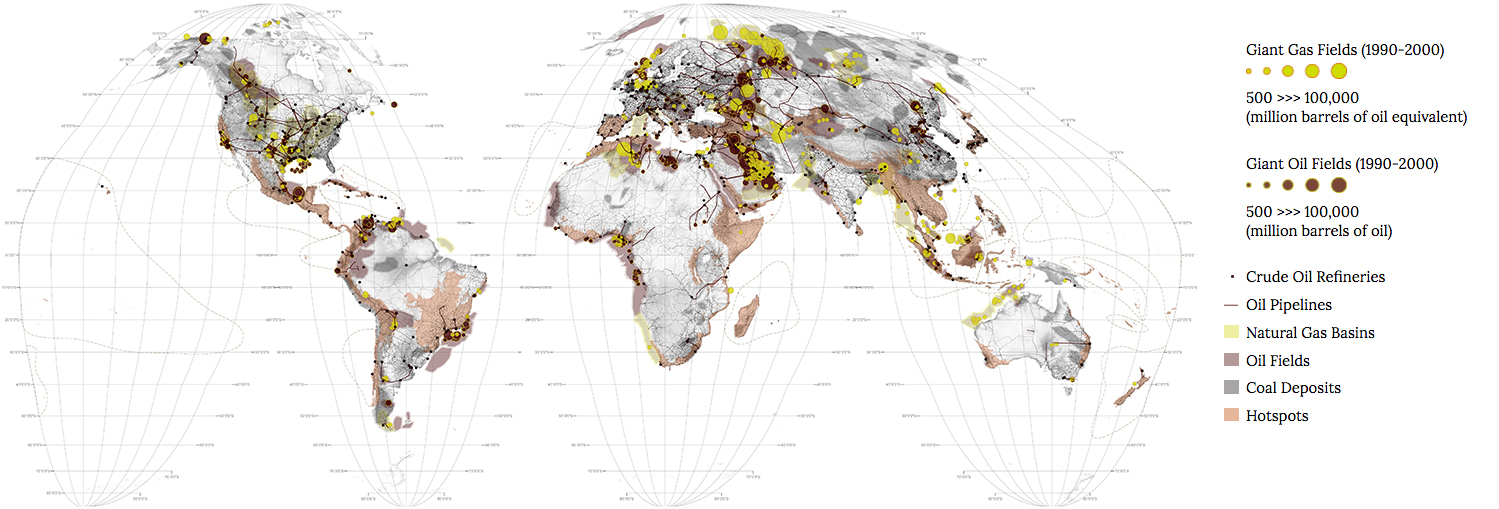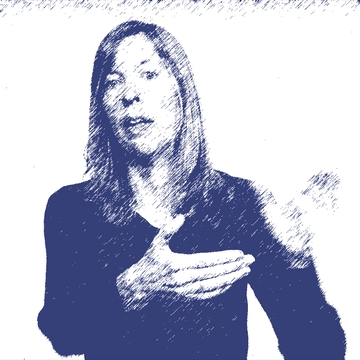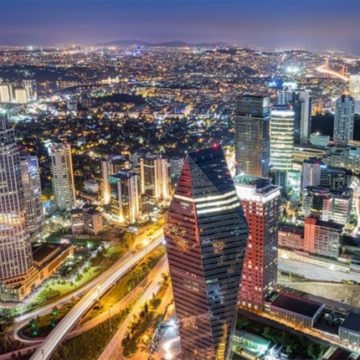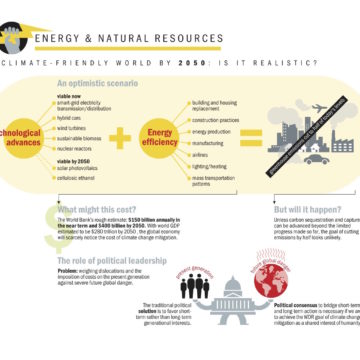Energy

The International Energy Agency (IEA) reports that there are signs of a global transition to low-carbon energy markets and that renewable energy sources are on the rise, but it is “not yet at the pace that leads to a lasting reversal of the trend of rising CO2 emissions”. 1 In fact, forms of carbon emitting energy production are expected to rise by 16% by 2040 as energy demand increases by approximately one third in non OECD countries. 2 Energy use in the OECD nations is expected to continue to decline. Globally, 1.2 billion people are currently without electricity and 2.7 billion still rely on traditional biomass for cooking. Because of unknown reserves, the volatility of markets, and the cultural politics surrounding energy use, forecasting when fossil fuel supplies will be exhausted is something of a dark art. Figures for natural gas vary from 50 – 230 years, oil anywhere between 10 and 190, and coal over 1000 years.
Since energy production and consumption is the largest emitter of greenhouse gases the sector is trying to improve its environmental performance by 1) increasing energy efficiency in buildings, transport, and industry; 2) progressively phasing out inefficient coal fired power plants, 3) increasing investment in renewable energy sources from 270 billion USD in 2014 to 400 billion USD in 2030, and 4) phasing out fossil fuel subsidies and reducing methane emissions in oil and gas production. 3 Scenario modelling from the International Energy Agency suggests that “[b]y 2040, renewables-based generation reaches a share of 50% in the European Union, around 30% in China and Japan, and above 25% in the United States and India: by contrast, coal accounts for less than 15% of electricity supply outside of Asia”. 4
1 International Energy Agency (IEA), World Energy Outlook: Executive Summary 2015 (Paris: IEA, 2015). Available at http://www.iea.org/publications/freepublications/publication/WEB_WorldEnergyOutlook2015
ExecutiveSummaryEnglishFinal.pdf.
2 ibid
3 IEA, World Energy Outlook.
4 Ibid.
Map created by Richard Weller, Claire Hoch, and Chieh Huang using data/information from the following sources:
1. Giant Gas and Oil Fields
Energy Data Exchange, “AAPG Datapages: Giant Oil and Gas Fields of the World,” https://edx.netl.doe.gov/dataset/aapg-datapages-giant-oil-and-gas-fields-of-the-world. Original source: M. K. Horn, “Giant fields 1868-2004, version 1.2,” CD-ROM format, (AAPG/Datapages Miscellaneous Data Series, 2004).
2. Crude Oil Refineries
Martin, “657 Crude Oil Refineries — Retrieved from google earth community,” http://worldmap.harvard.edu/data/geonode:_crude_oil_refineries_retrieved_from__bff (accessed November 14, 2014).
3. Natural Gas Basins
Feliks M. Perisits, Douglas W. Steinshouer, & Sandra J. Lindquist, U.S. Geological Survey, “Total Petroleum System Geologic Characterizations,” Digital Data Series (DDS) 60 World Petroleum Assessment 2000 (Denver: U.S. Geological Survey, 2000). Available at http://energy.usgs.gov/oilgas/assessmentsdata/worldpetroleumassessment.aspx#3882216-data (accessed November 16, 2014).
4. Oil Fields
Feliks M. Perisits, Douglas W. Steinshouer, & Sandra J. Lindquist, U.S. Geological Survey, “Total Petroleum System Geologic Characterizations,” Digital Data Series (DDS) 60 World Petroleum Assessment 2000 (Denver: U.S. Geological Survey, 2000). Available at http://energy.usgs.gov/oilgas/assessmentsdata/worldpetroleumassessment.aspx#3882216-data (accessed November 16, 2014).
5. Coal Deposits
Adopted from American Association of Petroleum Geologists, “The location of coal deposits in the world,” https://ugmsc.wordpress.com/2010/09/10/cbm-an-introduction/ (accessed November 16, 2004).
6. Hotspots
Critical Ecosystem Partnership Fund, “The Biodiversity Hotspots,” http://www.cepf.net/resources/hotspots/pages/default.aspx (accessed July 1, 2014). Data made available under the Creative Commons BY-SA 4.0 License: https://creativecommons.org/licenses/by-sa/4.0/legalcode.




